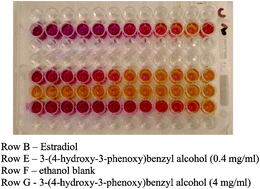Estrogenicity of pyrethroid insecticidemetabolites
Abstract
There is concern that

* Corresponding authors
a Department of Chemistry, University of Canterbury, Private Bag 4800, Christchurch, New Zealand
b Institute of Environmental Science and Research Ltd., P.O. Box 29 181, Christchurch 8004, New Zealand
There is concern that

 Please wait while we load your content...
Something went wrong. Try again?
Please wait while we load your content...
Something went wrong. Try again?
A. R. McCarthy, B. M. Thomson, I. C. Shaw and A. D. Abell, J. Environ. Monit., 2006, 8, 197 DOI: 10.1039/B511209E
To request permission to reproduce material from this article, please go to the Copyright Clearance Center request page.
If you are an author contributing to an RSC publication, you do not need to request permission provided correct acknowledgement is given.
If you are the author of this article, you do not need to request permission to reproduce figures and diagrams provided correct acknowledgement is given. If you want to reproduce the whole article in a third-party publication (excluding your thesis/dissertation for which permission is not required) please go to the Copyright Clearance Center request page.
Read more about how to correctly acknowledge RSC content.
 Fetching data from CrossRef.
Fetching data from CrossRef.
This may take some time to load.
Loading related content
